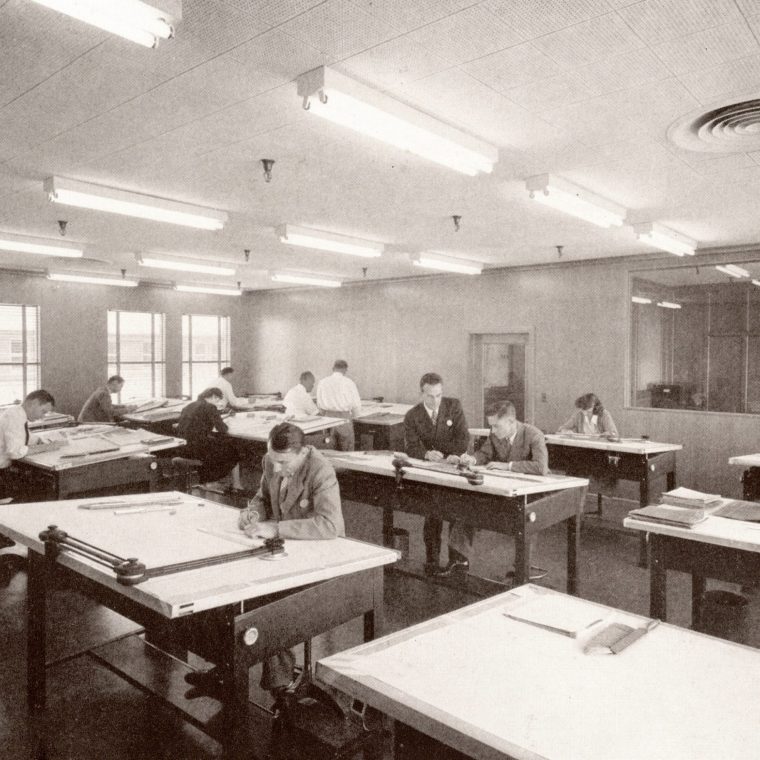There is one aspect of work that, it seems to me, is inherently resistant to remote work, and that is training of new employees. In our case, that usually means recent-graduate engineers. It’s important to make a distinction between orientation – teaching new employees the basics of a particular office set-up – and training. Every business has to have some form of orientation, although many deal with the issue by ignoring it and let new employees learn from their peers how you reserve vacation time and where printer paper can be found. Training is much more specific to a given industry, job description, and level of skill of a new hire.
It’s common for licensed professions have some form of apprenticeship after college.[efn_note]The details are specific to a given country and I’m describing US practice here.[/efn_note] For example, doctors attend medical school and then work as residents, receiving on-the-job training after medical school. For structural engineers, the apprenticeship period is written into our licensing laws: we need to have a set number of years of work experience in the field before we even allowed to take our final licensing exam. Having a masters degree reduces that number but does not eliminate it. The first licensing exam, which tests for general technical knowledge rather than specific engineering design and analysis knowledge, can be taken by a student near graduation; people who have passed that first exam but not yet the second are officially known as Engineers in Training. If the EIT designation doesn’t make the nature of the apprenticeship clear, nothing will.
Employers have obvious responsibilities to trainees: we have to give them meaningful work to perform, review their work with them so they can learn from it, and in the end sign off on documentation of their work for licensure. The first two steps are both problematic if the people involved aren’t in the same room at least some of the time. Real life design is far messier than the clear-cut examples used in teaching[efn_note]The popularity of “capstone projects” where students attempt something like a real design in their last year, is an attempt to address this issue.[/efn_note] and new engineers need a fair amount of guidance on how to approach the work. Explaining how to perform a piece of design to a recent graduate may take as much time for a supervisor as doing it themselves, but is a necessary step. Doing that via video call or chat is incredibly inefficient, but in 2020 there wasn’t much choice. Similarly, reviews work much better in person than distance.
Addressing this topic literally and simplistically, in conjunction with the previous discussion of offices, tools for remote work, and workflow, could lead to the ridiculous situation where young engineers are clustered in the office while their experienced supervisors work mostly from home. The best solution I can see – this is based solely on our experience, and there may be better solutions out there – relies heavily on scheduling. The young engineer and their supervisor have to arrange in advance to be in the office at the same time at the start of a project, or a piece of a project, and have to arrange in advance to be in the office at the same time for review. Questions after the introduction can be handled via video calls or chat; design work can be performed remotely. For that set-up to work, the supervisor has to have a sense of how long the given piece of work will take the trainee and has to commit to reasonably rapid review.
There’s been a lot of discussion about whether remote work leads to a loss of office efficiency. My answer is “mostly no” but training is the one area where I think it does. If nothing else, this issue puts a cap on the percentage of remote work that is possible. If our firm was entirely composed of experienced engineers, training of this type would not exist, but then we’d be (a) not performing a basic duty to our profession and (b) missing out on the new perspectives and energy that recent graduates bring.



